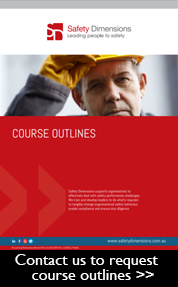
From Toolbox Talk To Boardroom Squawk – 10 Insider Tips to Rock Your Presentations
Whether you’re a leader, salesperson or trainer, at some stage most of us need to deliver a presentation at work or do some public speaking.
Great presenting skills help us to influence action, so here are 10 insider tips you can use to rock your presentations.
1. Know your intention.
Before you get started, understand why you’re giving this presentation. Is it to influence action, persuade, report, inspire, educate or a mix? What are the takeaways’ or key messages and ideas you want people to take from your presentation and how do you need to BE to achieve that? Summarise your content into no more than 3 key points so when you plan content, you know what you should include and it’s easier to stay on track. And most importantly what’s your call to action? If you’re not clear, your audience won’t be.
2. Have a plan.
If you fail to plan, you plan to fail. Now you know your intention, plan out your presentation around the takeaway you want the audience to action. When you’re deciding on what content to put into the plan, make sure you have an intro, middle and end that leads people to the key messages within the time allocated. It’s best to know your material from memory when possible but if you’re new to presenting or particularly nervous, keep some notes with you and check them once or twice to build your confidence. And if you’re not new to presenting, even a couple of minutes planning in your head will make a big difference.
3. Prepare yourself.
The content is only about 10% of the message. How you present the content creates meaning so make sure you dress right, warm up your voice, take some deep breaths to steady the nerves and feed the brain and be comfortable with how you move around the environment.
4. Practice in front of a buddy, or record yourself.
Even though you may have practiced many times on your own, there’s a sense of clarity which comes from presenting to a buddy or alternatively recording yourself on your phone and listening back. Your presentation might be amazing on paper, but when you hear it out loud it sounds very different. Integrate the feedback and keep practicing.
5. Open with a hook.
When a comedian begins their routine with So something funny happened to me on the way here tonight¦ you are immediately drawn into wanting to know what happened. Start your presentation with something that grabs the attention of the audience, intrigues them and has them open to receive your message. You can start with a question, a wild statistic or story that grabs them and engages them from the very start. Ted Talk presenters are experts at this.

6. Be you and your stories.
There’s nothing more engaging than a person being themselves. Bringing your personality into your presenting style via relevant stories, observations, and shared experiences with the audience helps to make you more relatable, increases trust and builds credibility. And stories are way more fun than a slow death by PowerPoint.
7. Look at people and engage.
Eye contact is a powerful connector. Make sure you share eye contact around the room if you’re presenting in person or through your web camera.
8. Read the room (or virtual room).
If you’re not into it, your audience will know immediately. If you’re bored, they’re bored. If you feel your topic is particularly dry, do something creative, add some humour or a few well-chosen slides, prop, or pop quiz to break it up’. In Questions engage their brain. By creating two-way communication, you create a conversation and share the load’.
9 Pause and slow down.
Pauses are a great way to bring attention back to you (and to give you a chance to breathe and gather your own thoughts). When you talk about serious issues, for example in a toolbox talk where you are addressing risks and potential danger, near-misses or injuries that have occurred, slow down a bit to give people the opportunity for it to sink in’.
10. Bring it home.
Create a clear path to wrapping up your presentation. Even though you covered them in the body of your presentation, you want to summarise the headlines of the takeaways to make sure it’s what you leave behind with the audience.
Want to elevate your Toolbox Talks?
Effective Safety Consultation Program
This program focuses on helping participants generate genuine two-way communication.
Get the skills to:
- Conduct effective and engaging Toolbox Talks, Pre-Start and safety meetings
- Gain employees’ and team members’ attention and get them motivated about safety
- Learn how to overcome potential barriers to achieving engaged participation
- Ensure others don't just hear, but understand safety messages
- Show confidence as a communicator and leader
- Apply effective consultation skills to all meetings

